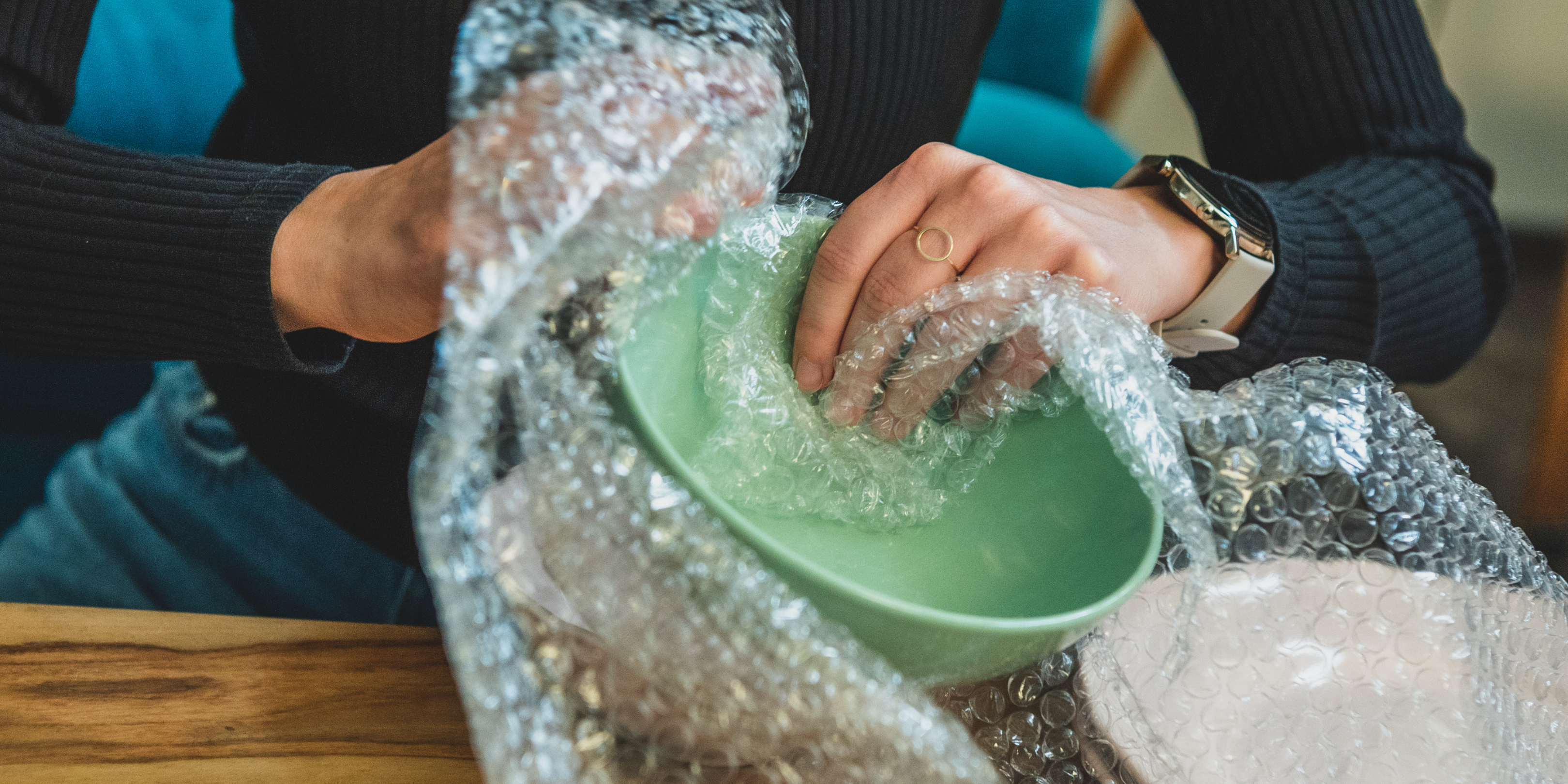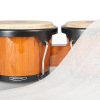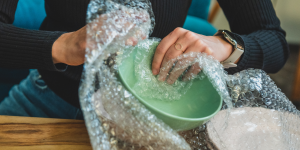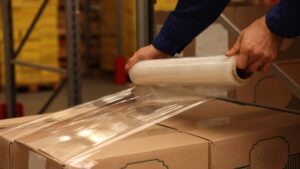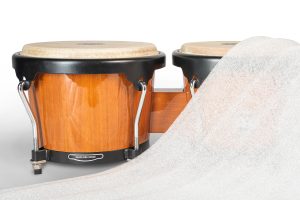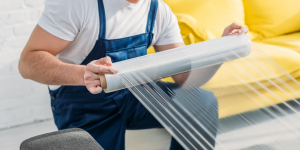Bubble wrap B1 vs B2 – key differences explained
Bubble wrap is a staple material for protecting all kinds of items.
Its protective properties make it a go-to solution in countless everyday situations. One of its biggest advantages is its versatility. Bubble wrap can be used to safely pack shipments – acting like an air cushion – but it can also end up as a fun toy for kids. Still, this is far from just “regular” bubble wrap. It’s a key material in many industries, offering protection against mechanical damage and preventing items from shifting during transport.
Table of contents
Bubble wrap comes in a wide range of widths (10 cm, 50 cm, 100 cm, and even up to 2 meters), roll lengths (typically 100 m or 200 m), colors, and weights (grammage). You’ll also hear about different film structures – like 2-layer or 3-layer (often labeled as 2-ply or 3-ply) – and formats such as tubing, half tubing, bags, rolls, or sheets. In day-to-day use, the most common labels are B1 and B2. However, it’s important to note that these designations don’t always tell the full story when it comes to the film’s actual properties.
Although both B1 and B2 bubble wrap are 2-layer variants, they differ in grammage, thickness, and level of protection.
What’s more, these labels are not standardized across the market – a B1 film from one manufacturer can have completely different specifications than a B1 from another.
That’s why it’s essential to check not just the name but the technical details before purchasing – especially the grammage, which determines the material’s strength, flexibility, and overall effectiveness in the packaging process.
It’s generally accepted that:
- B1 is a thin, lightweight, and cost-effective option - ideal for packing small and lightweight parcels.
- B2 is a thicker, stronger film - suitable for heavier or more delicate items that require higher protection.
At Mac-Graf, as the manufacturer, we don’t just list product specifications – we also offer the option to customize bubble wrap properties to match your exact needs. This means you can be confident that you’re choosing the right type of film for your industry – no guesswork, no risk of mismatch.
Bubble wrap B1 – key characteristics
B1 bubble wrap is perfect for protecting a wide range of surfaces, which makes it an excellent choice for packing. It shields items from crushing and helps absorb impacts during transport, including those caused by vibrations or shocks. This type of bubble film stands out thanks to its high production quality, the result of a carefully controlled manufacturing process. Made from polyethylene, it’s resistant to moisture, which means it can even be used to protect delicate items.
Uses of B1 bubble wrap
B1 bubble wrap is most commonly used to pack books, small electronic devices, cosmetics, jewelry, clothing, or even screws and hardware. It’s suitable not only for postal shipments, but also for sea, rail, and air freight. The main advantage of this type of wrap is that it’s perfect for protecting smaller items and accessories.
Bubble wrap B2 – key characteristics
B2 double-layer bubble wrap is designed primarily for larger and heavier items. These kinds of products often have sharp edges, which could easily tear through thinner B1 film. B2 is the better choice when packing bulky but fragile items that are particularly vulnerable to mechanical damage. This type of film is also made from durable polyethylene, and its strength comes directly from its higher grammage.
Uses of B2 bubble wrap
Despite its strong structure, B2 bubble wrap is still flexible and lightweight, making it easy to use for packing all kinds of items without unnecessary effort.
It offers excellent shock absorption and also works well as an insulating material. That’s why it’s often used to protect furniture during renovations or moves, especially when items need to be safely transported from one location to another.
The main difference between B1 and B2 bubble wrap - does the type of bubble film affect product protection during packing?
You now know the key difference between B1 and B2 bubble wrap. Since B1 is suited for lighter, smaller items, and B2 is better for heavier, larger products with sharp edges, you should have no trouble choosing the right type of film for your specific application.
Manufacturers offer a wide selection, and beyond the basic B1/B2 distinction, you’ll find that sizes and formats may vary across catalogs. That’s why it’s important to carefully consider how much film you actually need, so you can make a well-informed decision and avoid running short.
The demand is different for individual customers versus businesses, but as long as you’ve thought your purchase through, there shouldn’t be any surprises.
Bubble wrap is used across many industries – including for the protection of glass, furniture, ceramics, and electronics.
Thanks to its unique properties, it’s ideal for applications such as:
- bubble wrap for industrial packaging
- bubble wrap for protecting electronics
- bubble wrap for protecting ceramics
- bubble wrap for protecting glass
- bubble wrap for protecting furniture
- bubble wrap for e-commerce packaging
Are there different types of bubble wrap?
There are many types of bubble wrap available on the market, differing not only in grammage or number of layers, but also in bubble diameter, color, and additional functional features.
You’ll find options such as: classic bubble wrap, large-bubble wrap (like Fill&Wrap, which is great for filling voids in parcels), antistatic bubble wrap or bubble wrap with extra protective layers.
But a standard roll of bubble wrap isn’t the only option. You can also use other bubble-based packaging materials, such as: bubble bags with adhesive strips (ideal for packing items like furniture accessories or DIY kits), tubing and half-tubing or pre-perforated rolls cut to custom lengths.
Are there different quality levels of bubble wrap?
The quality of bubble wrap depends on the raw material, production process, thickness, and grammage.
High-quality bubble wrap made from LDPE polyethylene film effectively protects products during transport, shielding them from moisture and dust, and minimizing the risk of mechanical damage in transit.
As a manufacturer offering various types of bubble wrap, we tailor each variant to meet the specific needs of our customers.
Technical and eco-friendly variants
Among the available options, you’ll find not only classic 2-layer bubble wrap, but also 3-layer bubble wrap (known as B3 and B4), as well as self-adhesive variants and antistatic ESD bubble wrap.
There’s also recycled bubble wrap, which is becoming increasingly popular due to its eco-friendly profile.
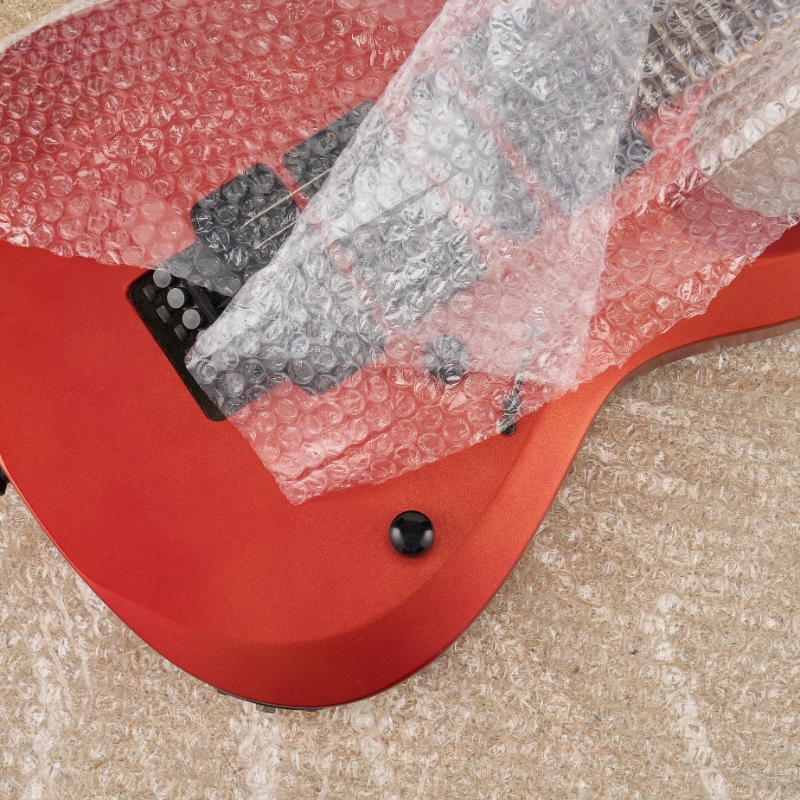
Frequently asked questions (FAQ)
It’s a specialized type of bubble wrap designed to protect delicate electronic items from electrostatic discharge (ESD).
It’s commonly used for packaging electronic components, PCB boards, and devices sensitive to static electricity.
Yes, bubble wrap can be used as a temporary thermal insulator.
The air bubbles create an insulating layer that helps reduce heat loss and can protect interiors from cold and frost.
Yes, bubble wrap is a popular solution for temporary thermal insulation – for example, in warehouse windows or storage containers.
It effectively helps reduce heat loss, making it a practical choice for short-term or seasonal insulation needs.
It all depends on what you’re packing. For lightweight parcels, standard B1 bubble wrap is usually enough. When packing electronics or delicate items, it’s worth considering antistatic bubble wrap. For heavier or bulkier items, a more durable option like B2 or even B3 provides better protection. The best approach is to match the bubble wrap type to the application and transport conditions.
Summary
Choosing the right type of bubble wrap – from lightweight and economical B1 to more durable B2 or specialist technical variants – plays a key role in protecting goods during transport and storage.
By considering factors such as grammage, thickness, and film structure, you can match the material to the specific challenges of your industry.
At Mac-Graf, we offer a wide range of bubble wrap solutions that can be tailored not only to physical requirements, but also to your sector’s environmental and logistical demands.
We can help you and optimize the packaging process in your company
Make an appointment with our advisor

Specializing in the sales of PE foam and bubble wrap, he effectively addresses the needs of clients in the packaging industry. With years of experience, deep market knowledge, and strong negotiation skills, he creates tailored offers and builds long-term business relationships. Outside of work, he’s passionate about basketball — a sport that has taught him the value of teamwork and consistency in achieving goals.

